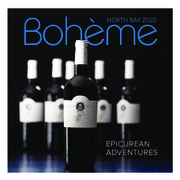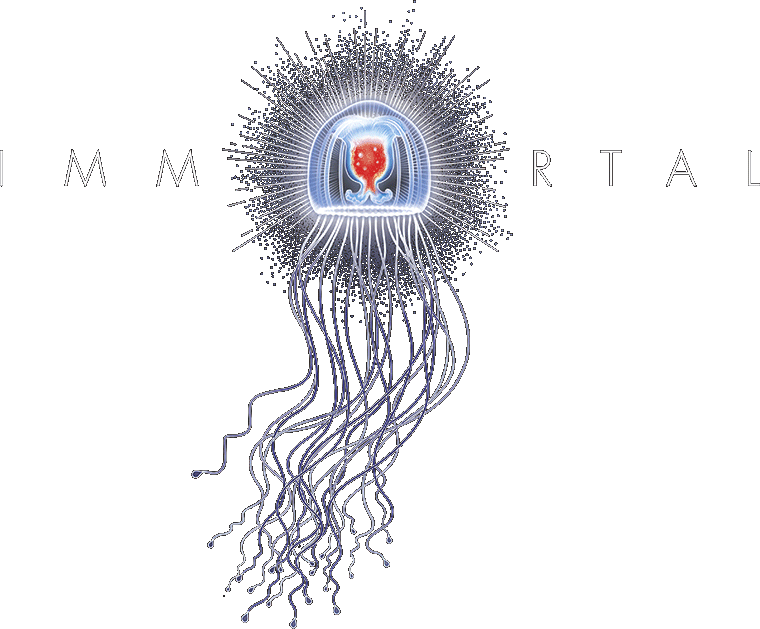Quest for Immortality

What does it take to make a hundred-point Sonoma cab?
Start with some help from the gods
BY CHRISTIAN CHENSVOLD
How does a wine achieve immortality? Become an elixir that would please the gods on Mount Olympus? A
wine so fine it’s capable of inducing oenophilic ecstasy? Simple: to achieve wine immortality— which means 100 points from a top critic— the stars have to align in just the right way. First you need the will to make a world-class wine, and then you need a vineyard capable of rising to the challenge. Next, don’t underestimate the power of packaging and presentation to tantalize even the most persnickety wine snobs. And finally—and this is key—you need the Socrates and Aristotles of the wine press to give you golden reviews.
It also helps if you give your winery a name like Immortal Estate, which entered the market in 2014 with a cabernet priced in the elysian realm of $300 per bottle. That’s rare for anything from Sonoma County, but especially a cabernet. “When wine sells in that range,’’ says wine writer Christopher Sawyer, “it’s almost 100% because of reviews from critics. The reason Immortal Estates can charge that is because they got 100 points from Robert Parker. A wine becomes culty when it gets a hundred points, and we just don’t have
that many of them in Sonoma County.”
In the question of what comes first—the price or the review—Tim Martin, co-owner of Immortal Estates, actually set his sights on the price, which he felt was justified by the quality, and left the critics to come up with whatever numbers they saw fit. Located near Spring Mountain, the vineyard previously sold wine under the name Hidden Ridge. “When we first took over the winery, people kept calling it Hidden Valley—which is the name of a salad dressing,” says Martin. "I looked into it, and there were just too many hiddens and too many ridges out there, so we sat around and talked about what a great name would be.
“A wine writer had said our vineyard produces a cab that is 'perfection, nearly immortal,”’ he continues. “Then my partners and I were at a restaurant and the sommelier had us try a sherry from 1905 that was just incredible. It hit me that everyone who made that wine was gone, yet their work remained in that bottle.
And so we settled on the name Immortal." The quest for eternity is expressed in Immortal Estate’s logo, which depicts something entirely outside the world of viticulture. The so-called immortal jellyfish is the only creature known to man capable of reproducing its cells in order to “live forever."
So far, the strategy certainly seems to have earned the favor of the gods. When Immortal Estate was in development, people told Martin he was crazy to price a Sonoma cab in the hundreds of dollars, but early blind taste tests confirmed the quality of what the choicest vines in the choicest part of the vineyard could produce. Immortal makes about 300 cases of its Impassable Mountain cabernet at $300, and 3,000 cases of its Slope cabernet, priced at $80. Over the past four years, Immortal has scored two 100s, a 99 and a 97—Olympic gold by any standard. On the secondary market, among collectors and auctions, Immortal Estate’s cab goes for as much as $1,000.
As a former wine buyer and as a collector himself, Martin says he honestly doesn’t know how wineries arrive at their prices, which can often seem arbitrary. He only knows that he wanted to make something epic, and yet still feel that what’s inside the bottle is worth even more. “As a wine owner, you can put any price on a wine you want, but that doesn’t mean the market will agree with you. I never want someone to feel like they overpaid. These buyers are very astute, and if your wine can’t stand up, I don’t care how pretty the elements are around it, it’s just not going to be good enough. If the juice isn’t there, you’re only good for a year or two before everybody starts to talk and says it’s not a good wine, it just looks pretty. And there are a lot of brands like that.’’
"Looking pretty” has to do with the entire experience of acquiring a cult wine unavailable at even the most high-end wine shop. Oenophiles must get on an individual winery’s customer list, and every aspect of the winery’s communication, packaging and website is on par with any other ultra-luxe item, be it Ferrari in automobiles or Cartier in jewelry. Martin measures his career in “harvests” instead of years (he’s up to 26), and a Napa winery he also owns, Tusk Estate, has a 10-year waiting list. Immortal, he says, is on a trajectory to get there soon.
Ferrari makes a lot of cars that end up being “garage queens," shining spotlessly in their place of presentation and rarely getting out onto an open road and doing what they were engineered to do. And how tragic to be a diamond necklace that sits in a jewelry box, rather than adorning the neck of a beautiful woman at an elegant event. Trophy wines often suffer a similar fate, sitting in cellars collecting a layer of noble dust, occasionally brushed off to impress a fellow connoisseur. But in the end, wine is made to be drunk.
“We always say, 'Go create your own immortal moments,”’ says Martin. “We all have those times with good friends, good food and good wine, that create moments you remember forever. And you could take the same wine the next night, and it wouldn’t be the same, because it’s everything coming together that creates immortal moments.
“In life, people raise us, build vineyards and teach us winemaking, and their spirits live on in us," he continues. “This vineyard was here before me and will be here after me, and my job is to be a good steward. Years from now, someone will pull out a 25-year-old bottle of Immortal, and even though I won’t be around, the work of my hands will remain.”
